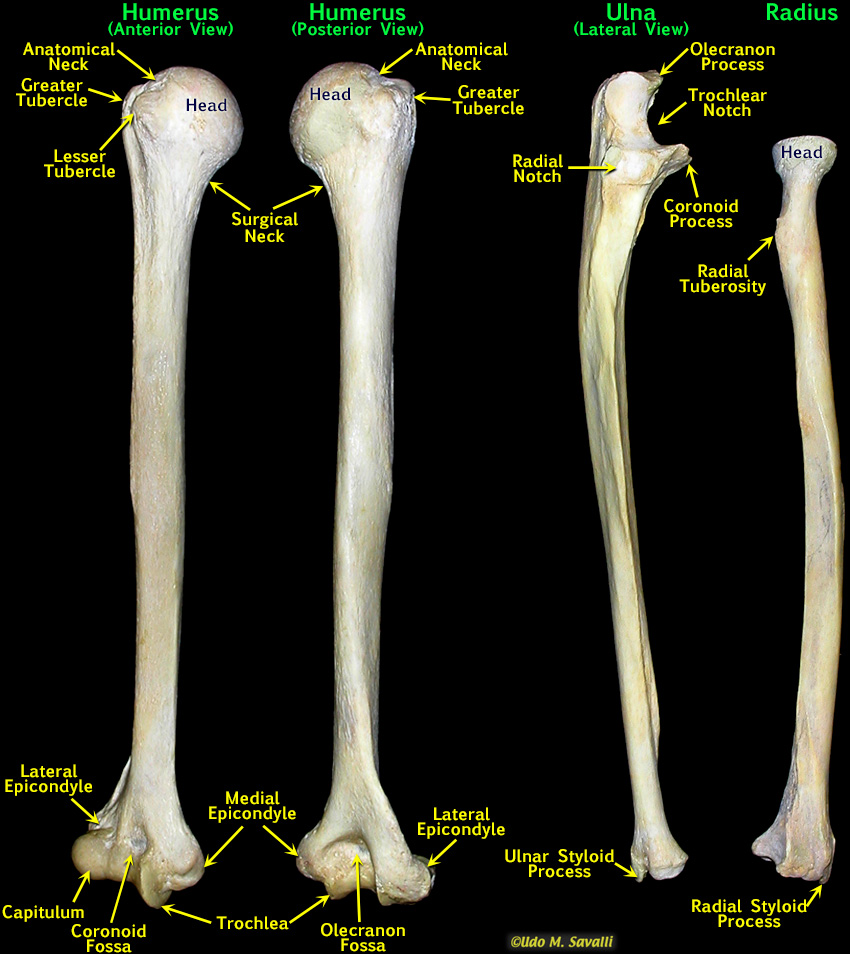BIO 201 — Human Anatomy & Physiology | ||||
| ||||
The markings of the Humerus (2 views), Ulna and RadiusIdentification: The humerus (like the femur) is large and has a distinct rounded head, allowing for a great range of movement. The ulna is best identified by the distinctive U-shaped notch made by the olecranon and coracoid processes (think U for Ulna). The radius' most distinctive feature is the nearly perfectly round, flat-topped head (think radial). Determining side: For the humerus, first orient it so that the rounded head is superior (up) and pointing medially (toward the body's midline). Then you will need to determine the anterior vs. posterior side. On the humerus, look for the deep olecranon fossa on the posterior side (where the olecranon process of the ulna fits in when the elbow is straightened). The specimen shown is from the right side. For the ulna, the U-shaped trochlear notch is proximal and the opening of the notch faces anterior. Then, the styloid process at the distal end must be medial as the ulna is the medial bone of the forearm. A right ulna is shown. You do not need to distinguish left and right on the radius. |
|
This page last updated 18 August 2019 by Udo M. Savalli () Images and text © Udo M. Savalli. All rights reserved. |
